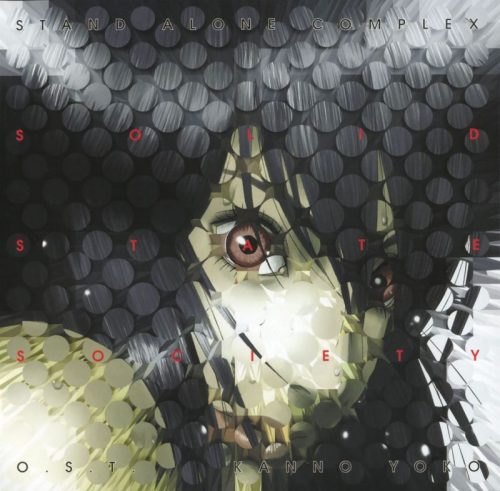
Ghost in the Shell is easily one of the most influential franchises for introducing the Western world to anime. Its techno-punk theming and spiritual underpinnings showed the rest of the world that so much more could be explored with animation as a medium. The movie was an underground hit in 1995 but exploded into the mainstream with the 2002 TV anime Ghost in the Shell: Stand-Alone Complex. Production I.G made several attempts to revive the franchise with a new animated movie, a sequel TV series, an OVA series, and even an American feature film, but nothing has managed to stick with us like Stand-Alone Complex.
Why is that? If you were to ever ask just a casual fan about what they remember about Ghost in the Shell, it always comes down to the Laughing Man story arc of Stand-Alone Complex. Why can’t other Ghost in the Shell stories break through like it could? Well, we have some ideas!
Section 9’s Story

Whenever you think of the main character of Ghost in the Shell, you’re obviously thinking of Major Motoko Kusanagi. After all, all the advertising puts Motoko front and center. She’s the one who gets the cool slo-mo freefall drops from buildings. Ghost in the Shell’s main theme centers on the intertwining connection between humanity and technology, and Major Kusanagi, as the most cybernetic of Section 9, encapsulates this exact theme. Her stoic terseness only adds to her charisma. Obviously, everything should be about her, right?
This is actually something that’s very easy to forget about Stand-Alone Complex, but time is shared pretty equally among most of the major members of the team. Everyone serves a purpose as well; Paz and Azama are the beat cops, Ishikawa is their tech guy, Togusa serves as their main investigator, Batou’s the muscle, and Kusanagi is the one with the field talent to get things done. This keeps the series from getting too one-note; the Laughing Man is a big story and needs a team of people to tackle it.
Serialized Structure
Even though “filler episode” is considered a dirty term in the world of anime, it actually added to Ghost in the Shell: Stand-Alone Complex’s appeal. It’s hard to remember, thanks to the rise of anime streaming services, but discovering anime back in the early 2000s was a much different beast. It all came down to catching random episodes that aired on Cartoon Network’s Adult Swim block during the wee hours of the night. You’d catch a random episode that had no bearing on the plot, get hooked on the themes, and then slowly catch up with the main plot. The episode title cards are even quite helpfully color-coded to boot. If the episode title had a blue backdrop, it was a Laughing Man episode. A green one meant the episode was “stand-alone” (show’s pun, not ours).
Besides, it’s not as if these filler episodes entirely deviated from the main themes of the show. Ghost in the Shell was always about the struggle of finding identity in a world that becomes more and more industrialized. The conclusion of the Laughing Man story is the ultimate, but there are plenty of other short stories that tackle the notion of identity. One episode tackles a soldier with massive PTSD who can’t let go of his life as a violent war criminal. Another goes into a diplomat’s son who’s fallen in love with his sex bot and can’t differentiate her pre-programmed responses from reality. And so on. They’re easily digestible stories that serve to enhance the themes of the Laughing Man, and serve to get the viewer hooked into following the main story.
Not Afraid of a Little Comedy
It’s a minor point, to be sure, but Ghost in the Shell is too dry for its own good sometimes, getting lost in technobabble and talking over the heads of the average viewer. Stand-Alone Complex is, for the most part, played straight but it does have its small moments of levity. Sometimes it has sight gags like Batou going undercover and claiming he has a wife, followed by his target sneaking a peek at a picture of his family. You clearly see it’s Motoko pretending to be an average woman and a random kid they pulled from the neighborhood. Other times you have the Tachikomas’ naivety working against them and helpfully guiding a little girl who is lost while not understanding their own situation. These moments ground Stand-Alone Complex, keeping it from coming off as too pretentious.
Final Thoughts

We didn’t really get into the nitty gritty of the story of Ghost in the Shell: Stand-Alone Complex in this article, but these are the points that have largely gone undiscussed when it comes to the show’s appeal. Ultimately, it’s still a very relatable story about the lack of growing lack of identity in modern times and the powerlessness one feels in the face of injustice, with a very easily identifiable symbol in the Laughing Man icon to connect these themes all together. Maybe it’s not much more than that, but the points mentioned above shouldn’t be ignored either.
What do you think? Are people just not giving the 2017 movie a chance? Really wish more fans would check out Arise? Still bitter about Ghost in the Shell 2’s mediocre critical response? Let us know in the comments below!
Recommended Post
Anime Rewind: Ghost in the Shell Asks What Makes You... You?
Recommended Post




